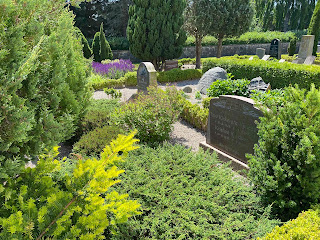When Cliff and I returned to Darmstadt from Denmark we met a family of refugees from Ukraine who are staying in a guesthouse at the monastery. Sergey and Maria and their seven children between six months and thirteen years old are living in a house at the edge of the property.
While we drank coffee together on the patio, the seven kids popped in and out of the house. The oldest girl brought the baby out to see mom, then the oldest boy scooped the baby up and disappeared into the house.
Sergey is Ukrainian, from Kyiv. Maria is Russian, from Moscow. Sergey speaks Ukrainian and Russian. Maria speaks Russian, English, and Ukrainian. They marked their 15th wedding anniversary on March 31st with their whole family in a car driving toward the border to seek asylum in the west. Maria and Sergey lived in Sevastopol in Crimea, so they have been in an area of Russian occupation since 2014.
When the Russians invaded, the fighting was not near their home, but missiles fired from Russian ships blasted over their city. Maria talked about trying to tell the kids it would be okay, but after a month, they decided to leave. After a long journey, they made it to Darmstadt and the Land of Kanaan monastery.
Several times over the past five years, I have stayed in the guesthouse where Sergey and Maria and their family are now staying. It was built for several men, usually visiting volunteers. There are several small rooms, a kitchen and a common room and two bathrooms with showers. It was always so quiet. It was funny and delightful to see kids zooming in and out, running and riding bikes.
I am very glad to see another family safe from the war Russia inflicted on Ukraine and the democratic world.




























